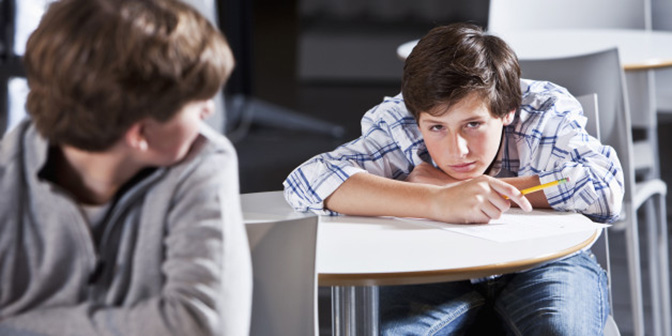
By Mathew Portell
As a classroom teacher in 2006, I always knew my students were affected by their adverse life experiences – but I primarily understood this through the lens of poverty, not considering the adversity that kids in all kinds of communities might face. In the past several years, the science has shifted from poverty to focus on the impacts of traumatic events in the lives of children from all backgrounds. A recent report from the Center for Disease Control (https://www.cdc.gov/violenceprevention/acestudy/index.html) highlights facts on the effects of trauma, which include decreased cognitive ability, depression, suicide, engagement in risky behaviors, and even early death. There are also correlations with students’ social, emotional, and academic needs.
But there’s good news as well: the research indicates that we as educators can elicit drastically better outcomes for children if we help children form strong, stable, nurturing relationships.
A few years ago, as a first year principal of an underserved elementary school in Nashville, I knew that I had to attempt to change my school’s operating systems to ensure that all students were supported with those healthy relationships while also creating a staff-wide understanding of the effects of trauma on children. Our student behavior was nearly unmanageable, the teachers were physically and emotionally exhausted, and I was simply surviving.
That year – with only 325 students – we had 212 office referrals, 13 students were suspended 30 days, and my teachers were suffering from burn-out and compassion fatigue. The adults loved and cared for the students, but our approaches were more reactive than proactive. It was quickly apparent that there was no magic wand or program to “fix” the behavior problems. We learned that the transformation really had nothing to do with the students; it was all about the adults. We had to stop asking, “What is wrong with you?” to our students and start asking, “What has happened to you?”
Just two years into this school culture paradigm shift to becoming a trauma-informed school, almost all of the above has changed (except the tired part – some things in education never change!). In all transparency, not all of our students’ behavioral problems have gone away. However, the way in which we approach them is completely different. We see behavior as an opportunity to support or teach rather than punish. Again, this transformation is about how we as adults respond to students’ needs.
As the principal, I have been able to reflect on valuable lessons that a school should focus on when adopting a trauma-informed approach. Although the process is not easy, the benefits to students and staff outweigh the amount of effort needed. Here is what I have learned:
- Help teachers and staff understand the “why”: Ensure faculty and staff know the brain science around trauma, as well as the potential effects of trauma on children’s social, emotional, and academic development. Go deep into the research! This isn’t just professional development, it is a mindset shift – therefore, connections and dialogue must be created regularly.
- Implement strategies designed to support strong relationships: By building stronger relationships, students build agency for themselves and empathy for their peers. Examples include Check/In and Check/Out Mentoring, Restorative Circles, student-led clubs, and morning meetings/closing circles, proven techniques that give students and staff opportunities to engage in dialogue and check up on each other.
- Support teachers and staff in setting the tone: Provide professional learning for teachers on de-escalation while reinforcing the importance of adults maintaining their self-control, empathy, and the power of relationships.
- Involve the local community: Invite the help of your community partners and parents. Be open and honest about the shifts while also taking the opportunity to educate the stakeholders on why the school is making the shift (hint: use the research).
- Support the adults as much as you support the students: Provide real-time support for teachers who are feeling escalated and need a moment (Tap in/Tap out). Provide teachers opportunities for voice through the process. Overtly address self-care by promoting it, supporting it, and building time throughout the year to engage in it.
- Measure outcomes: Create systems to measure your success (student, teacher, and family perception surveys; behavioral system data; academic growth, etc.) to ensure that what you are doing is working and to make any necessary adjustments.
Mathew Portell is the principal of Fall-Hamilton Elementary in Nashville, Tennessee, and the founder of Ride for Reading, a nonprofit that distributes books via bicycle to low-income communities.
See the video from Edutopia tracking the journey toward Trauma-Informed Care at Portell’s school in Nashville: https://www.edutopia.org/school/fall-hamilton-elementary.
Psychologist’s Perspective:
Role of School Psychologists in Supporting Trauma-Sensitive Schools
School psychologists are uniquely trained to deliver high-quality, evidence-based mental and behavioral health services in schools to ensure that all students have the support they need to thrive. Specifically, school psychologists:
- Provide comprehensive mental and behavioral health services to all students.
- Develop comprehensive data collection and management plans to help coordinate service delivery.
- Consult with other educators on strategies and interventions for reducing barriers to learning.
- Work with administrators to implement school-wide mental and behavioral health programs.
- Promote school policies and practices that ensure positive and safe learning environments for all students.
- Provide ongoing professional development regarding trauma informed practices.
- Educate families about the impact of toxic stress, adversity, and trauma.
From: National Association of School Psychologists. http://www.nasponline.org/resources-and-publications/resources/mental-health/trauma-sensitive-schools

 .
.